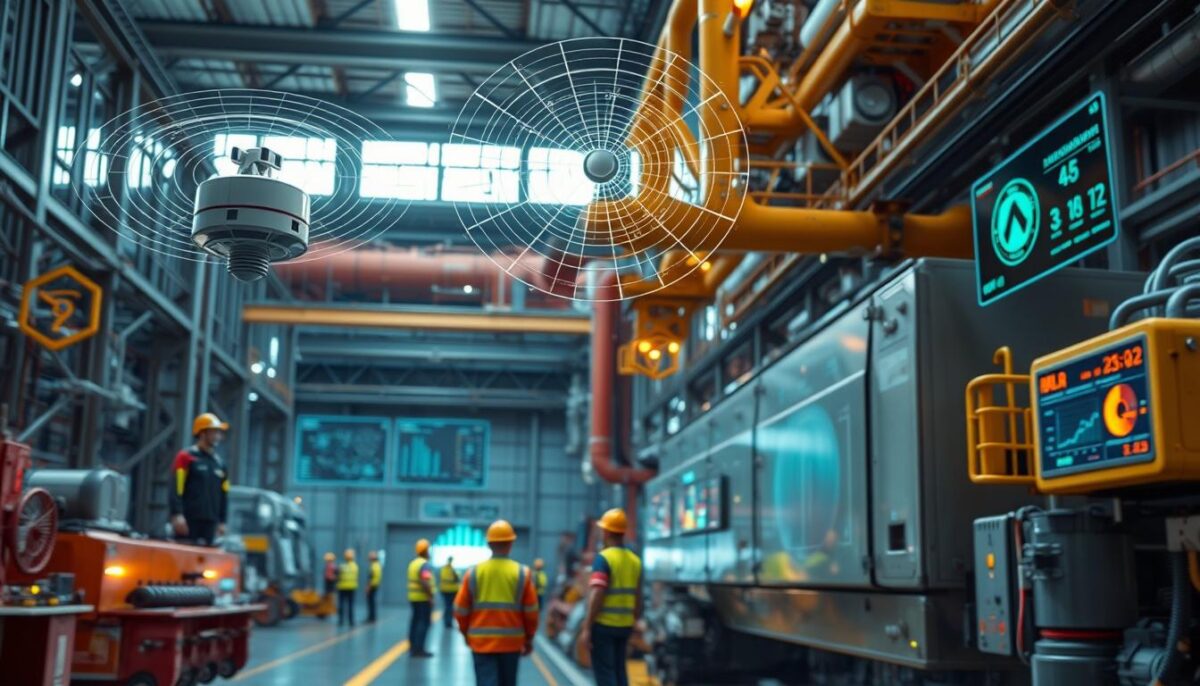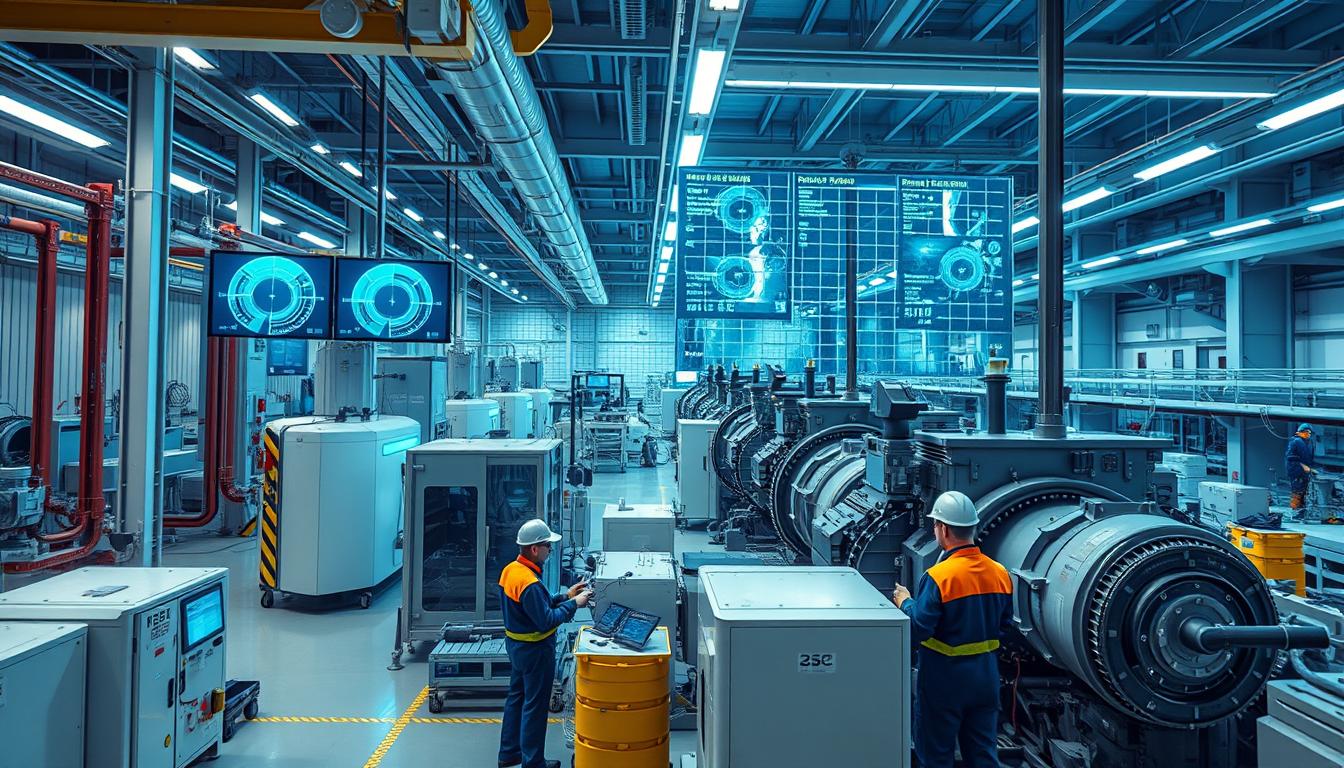In the rapidly evolving industrial landscape, the integration of real-time monitoring with radar technology is emerging as a game-changer for enhancing industrial safety. With an emphasis on reducing workplace accidents and ensuring compliance with safety protocols, industries are increasingly adopting advanced radar systems. This technology identifies potential hazards in real-time, significantly improving operational efficiency and workplace safety standards.
Notable companies such as Siemens and Honeywell have showcased the profound impact of radar technology, demonstrating how its incorporation into safety measures leads to noteworthy reductions in incidents. By combining radar with other safety technologies, industries are not only bolstering their safety protocols but also transforming the entirety of operational practices.
Understanding the Importance of Industrial Safety
Establishing robust safety protocols is essential in today’s industrial landscape. Safety measures do not merely serve as guidelines for prevention. They foster a culture prioritizing workforce well-being and productivity. Research shows that organizations implementing effective safety protocols experience a notable increase in employee morale. For instance, companies adhering to rigorous standards, such as OSHA, report significant reductions in accident rates. This underscores the critical relationship between structured safety frameworks and a healthy work environment.
The Impact of Safety Protocols on Workforce Well-Being
Implementing comprehensive safety protocols directly enhances workforce well-being. A structured approach to accident prevention leads to a more secure atmosphere for employees. This, in turn, generates higher productivity levels and lower turnover rates. Businesses that prioritize safety often cultivate high employee morale, as staff feel valued and protected. Enhanced safety measures result in less disruption in daily operations and a more satisfied workforce.
Current Trends in Industrial Safety Technologies
Technological advancements are reshaping the future of industrial safety. The integration of automation and predictive analytics plays a pivotal role in developing proactive safety strategies. Real-time data analysis allows for quick decision-making in critical situations. Emerging tools like wearable safety devices monitor vital information, alerting workers to potential dangers immediately. Drones are now commonly used for inspections, minimizing the risk of personnel entering hazardous workplaces. These industrial safety technologies illustrate a significant shift toward a tech-oriented approach that enhances safety protocols.
| Technology | Purpose | Benefits |
|---|---|---|
| Wearable Safety Devices | Monitor health metrics | Immediate danger alerts |
| Drone Inspections | Conduct remote site evaluations | Minimize personnel risk |
| Predictive Analytics | Analyze safety data | Enhance decision-making |
| Automation | Streamline operations | Reduce human error |
Real-Time Monitoring with Radar: Enhancing Industrial Safety
Radar technology plays a crucial role in modern industrial applications, making environments safer and more efficient. Its ability to emit radio waves enables the detection of objects, which aids in monitoring operations in real time. This section explores how radar technology works in industrial settings, the benefits of implementing real-time monitoring systems, and successful case studies showcasing its impact.
How Radar Technology Works in Industrial Settings
Radar systems operate by transmitting radio waves that bounce off objects, providing critical data about their distance, speed, and direction. Such functionality proves indispensable in industrial settings where monitoring systems can detect equipment malfunctions and assess environmental conditions. Industries utilize radar technology for hazard detection, allowing for proactive measures before incidents occur. This real-time data helps businesses maintain optimal performance and comply with safety standards.
Benefits of Implementing Real-Time Monitoring Systems
Implementing real-time monitoring systems powered by radar technology offers numerous safety benefits. Key advantages include:
- Enhanced incident reduction through continuous surveillance and immediate alerts.
- Cost-effectiveness as timely interventions prevent costly downtime and potential injuries.
- Performance optimization by ensuring equipment operates within set parameters.
- Improved compliance with regulatory standards, fostering a culture of safety.
Organizations incorporating radar technology in their safety protocols often witness significant improvements in operational practices.
Case Studies: Success Stories in Radar Implementation
Examining real-world applications of radar technology reveals compelling success stories across various industries. For instance:
- A major manufacturing plant integrated radar monitoring, leading to a 30% reduction in equipment downtime due to earlier detection of failures.
- A construction site employed radar systems, resulting in a remarkable 40% decrease in safety incidents related to site surveillance.
These case studies not only highlight industrial safety success but also provide best practices for organizations aiming to leverage radar technology in their operations. Overall, the findings underscore the immense value that radar implementation brings to workplace safety.

Future of Industrial Safety Technology
The future of industrial safety is set to be transformative, driven by significant technology advancements and a focus on integrating artificial intelligence in safety measures. As radar evolution progresses, we can expect enhanced capabilities that allow organizations to implement proactive risk management strategies. This shift towards predictive analytics will enable industries to foresee potential hazards before they escalate, creating a safer environment for all employees.
With the rise of smart factories, the integration of connected safety devices will become increasingly important. These devices will facilitate seamless data exchange between machinery and monitoring systems, ensuring a comprehensive view of operational safety. As industries adopt these smart technologies, they will not only comply with safety standards but also improve overall efficiency in their operations.
Future industrial safety will also emphasize user-friendly interfaces, making it easier for personnel to interact with safety technologies. Empirical evidence suggests that enhancing usability encourages better adherence to safety protocols among staff. The ongoing investment in innovations that prioritize these aspects of safety technology promises to set new benchmarks for risk reduction and operational excellence in various sectors.




